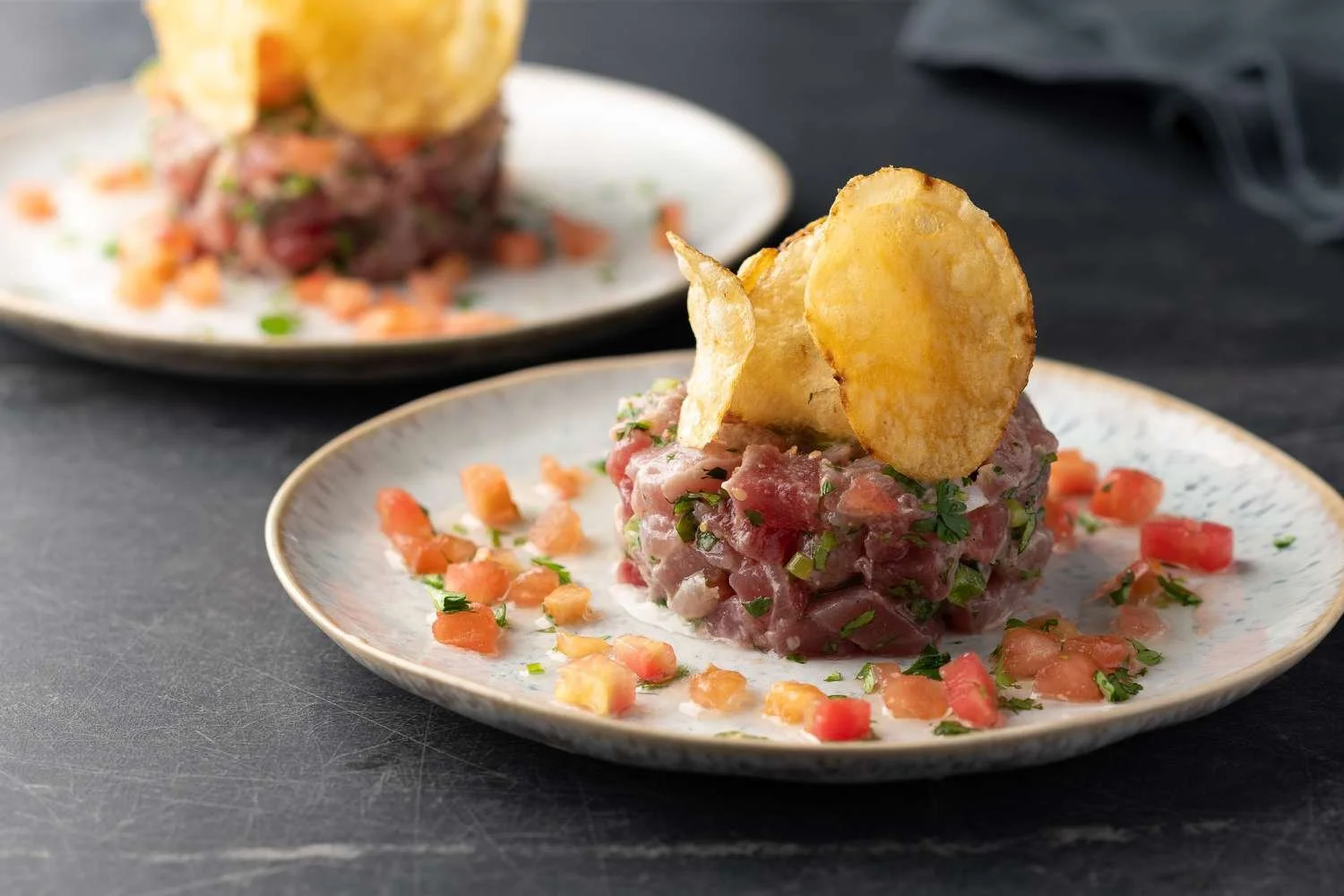Can I Eat Fish Tartare During Pregnancy?
At a Glance:
⚠️ Concern: Fish tartare contains raw fish, which may harbor Listeria, Salmonella, parasites, or high levels of mercury.
🔥 Risk Level: High — Fish tartare is not safe during pregnancy due to the risk of foodborne illness and mercury exposure.
✅ Safe Practices: Avoid raw fish dishes. Choose fully cooked, low-mercury seafood as a safer alternative during pregnancy.
Fish tartare is a refined and flavorful dish made from raw, finely chopped fish—often tuna or salmon—mixed with oil, citrus, and seasonings. While it’s considered a delicacy in many cuisines, fish tartare is not safe to eat during pregnancy. The combination of raw seafood and potential mercury exposure makes it a high-risk choice for expectant parents.
Here’s why it’s best to avoid fish tartare while pregnant, and what safer alternatives you can try instead.
Why Fish Tartare Is Unsafe During Pregnancy
Fish tartare is served raw and unpasteurized, which means it may carry harmful bacteria or parasites that are not killed through cooking.
The primary risks include:
Listeria monocytogenes – can grow even in refrigerated foods and lead to listeriosis, which increases the risk of miscarriage, stillbirth, or preterm labor.
Salmonella and E. coli – can cause dehydration, fever, and gastrointestinal illness.
Parasites like Anisakis – may cause digestive issues and, in rare cases, allergic reactions.
Mercury exposure – some fish used in tartare, like bigeye tuna, contain high levels of mercury, which may harm fetal brain development.
Pregnant women are about 10 times more likely to get listeriosis than other healthy adults. Because immune systems are altered during pregnancy, it is harder for pregnant women to fight off infections.
FDA – Listeria & Pregnancy
Common Types of Fish Tartare to Avoid
Many types of raw fish may be used in tartare, including:
Tuna tartare (especially with ahi or bigeye tuna)
Salmon tartare
White fish tartare (e.g., snapper, seabass, cod)
Mixed seafood tartare (e.g., with scallops or shrimp)
No matter how fresh the fish may seem, it’s not possible to guarantee the dish is free from bacteria or parasites unless the fish is cooked.
Safer Alternatives to Fish Tartare During Pregnancy
While raw fish is off the table, you can still enjoy seafood-inspired dishes that are cooked and safe:
Cooked tuna salad (using canned light tuna, which is low in mercury)
Baked salmon flaked and chilled in a lemon-dill dressing
Vegetarian tartare made with beets, avocado, or chickpeas
Fully cooked ceviche-style seafood (only if fish is cooked, not just cured in citrus)
Stick to 2–3 servings per week of low-mercury, fully cooked seafood like salmon, cod, tilapia, or shrimp.
Tips for Enjoying Seafood Safely During Pregnancy
Cook fish to an internal temperature of 145°F (63°C)
Avoid sushi, sashimi, tartare, and ceviche made with raw fish
Choose low-mercury options like salmon, sardines, and pollock
Avoid high-mercury fish such as bigeye tuna, swordfish, and king mackerel
Always store seafood properly and avoid anything left unrefrigerated
Conclusion: Skip Fish Tartare While Pregnant
While fish tartare may be rich in flavor and nutrients, it’s not a safe choice during pregnancy due to the risk of foodborne illness and mercury exposure. Choose fully cooked fish options instead to enjoy the benefits of seafood—without the risk.
Disclaimer: The content on this website is for informational purposes only and is not intended as a substitute for professional medical advice, diagnosis, or treatment. Always seek the advice of your physician or another qualified health provider with any questions regarding your health, pregnancy, or medical conditions.
Reference: https://www.cdc.gov/food-safety/foods/pregnant-women.html
